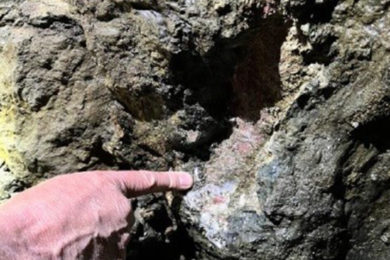 The Government of South Australia has released new high resolution satellite imagery covering the entire State to the world’s explorers. The ASTER geoscience maps and data sets, supported by the Government’s PACE 2020 initiative, will assist explorers to identify promising areas to target drilling programs, and are now available for explorers to view free of charge on-line through the South Australian Resource information Geoserver – SARIG 2020. Geological Survey of South Australia Director, Dr Tim Baker said the ASTER maps provided a level of detail and accuracy – never seen before in South Australia.
The Government of South Australia has released new high resolution satellite imagery covering the entire State to the world’s explorers. The ASTER geoscience maps and data sets, supported by the Government’s PACE 2020 initiative, will assist explorers to identify promising areas to target drilling programs, and are now available for explorers to view free of charge on-line through the South Australian Resource information Geoserver – SARIG 2020. Geological Survey of South Australia Director, Dr Tim Baker said the ASTER maps provided a level of detail and accuracy – never seen before in South Australia.
“ASTER maps provide a google-like “mineral zoom” of the cover overlying geological formations, aiding explorers in the search for economic mineral deposits,” he said. “This processing technology means explorers can now see spectral wavelengths sensitive to important rock forming minerals including: iron oxides, clays, carbonates, quartz and alteration minerals such as muscovite and chlorite. The information will help explorers better target their drilling programs, ensuring this State remains an attractive place to explore. The maps will complement the state’s drill core data archive.”
The maps were previewed at the PDAC in Toronto and formally promoted at workshops at the South Australian Resources and Energy Investment Conference, being held in Adelaide.
DMITRE Mineral Resource Executive Director, Dr Ted Tyne, said the ASTER geoscience mineral maps – made possible by advances in collecting and processing information from satellites – provide a valuable new exploration tool for our resources sector.
“We expect the maps and data will be in high demand from explorers, and have organised an ASTER workshop with our CSIRO partners to enable explorers to get the best value from them,” he said.
The Centre of Excellence for 3D Mineral Mapping (C3 DMM) together with the CSIRO Minerals Down Under and Geoscience Australia partnered with the South Australian Government through the PACE 2020 initiative, and with Japanese and USA Space Technology Partners, to deliver the South Australian ASTER Maps.
“The maps are generated from Japan’s Advanced Spaceborne Thermal Emission and Reflection Radiometer (ASTER) sensor onboard a US satellite – South Australia is partnering in a truly global project,” Tyne said.
Director of C3 DMM who collaborated on the project, Dr Cudahy, said the State’s ASTER geoscience release is the second across Australia. Explorers can view the new ASTER maps on SARIG 2020 – the South Australian Resource Information Geoserver at: www.sarig.dmitre.sa.gov.au and by selecting the regional mineral map tab – best viewed through web browser, google chrome.
A presentation on the maps and data will be delivered at the South Australian Resources, Energy and Investment Conference Technical Forum on Wednesday May 2, and a half-day ASTER workshop will be held on Thursday May 3 2012, demonstrating interpretation. Technical Forum registration is essential: www.saresourcesconf.com/technicalforum/








